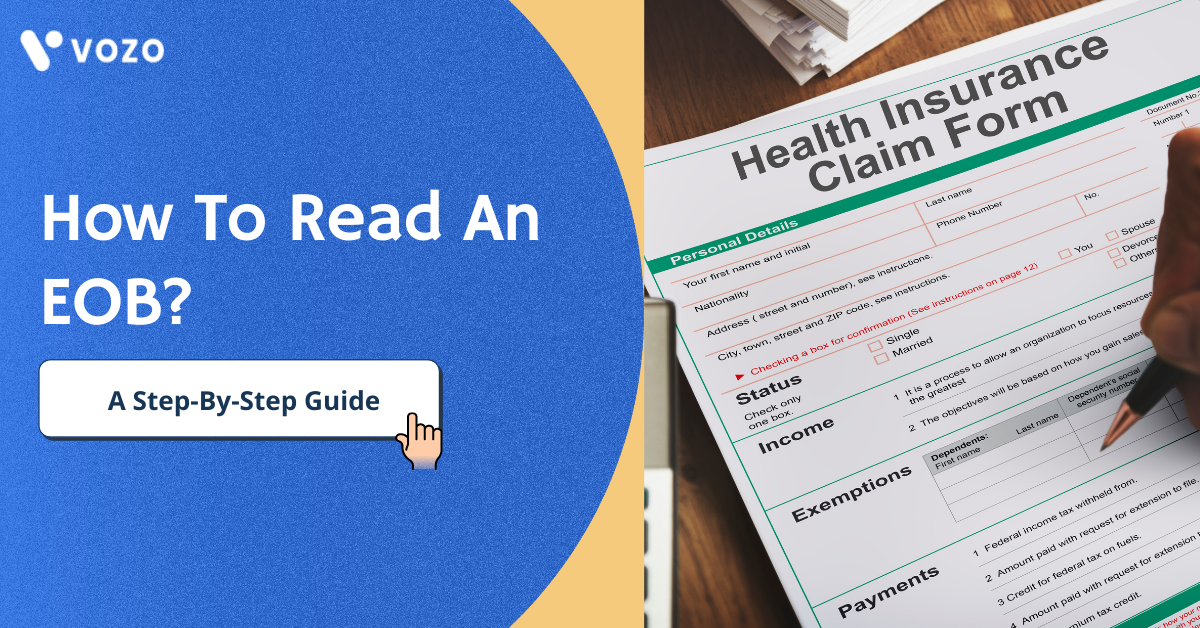How To Read An EOB?: A Step-By-Step Guide
An Explanation of Benefits (EOB) is a statement from your payer providing details on payment for the medical billing service you received. The EOB clearly explains to you what services were paid by your insurance plan and how much you’re responsible for paying yourself. Your EOB is not a bill, but it helps you to keep track of important data such as
- How much your provider charge for medical billing services
- How much of those charges does your health plan covers
- The amount your health plan paid
- The amount you owe (including deductibles, and copays)
How to read an EOB?
Your EOB includes three sections as follows
1. Summary of Charges:
A summary of the bills your health care providers sent to payers for health services provided to you and other family members on the plan.
2. Plan Accumulations:
This section shows you:
• The amount of money you have paid to date for health care services
• The amount you are expected to pay for each member and family as a whole
• The amount remaining until you meet your annual limit
3. Claim Detail:
Specific information for each claim that is submitted to your payer. It includes:
• The date the service was received
• The procedures performed
• The charges for that claim
• How your payers handle the claim
What is included in your EOB?
The EOB contains the following information:
Your name, or the name of your dependent (whoever received the service)
Your (or your dependent’s) health insurance ID or policy number, and the claim number
The name of the health care provider who administered care – doctor, dentist, specialist, laboratory, hospital, or clinic
The type of service or equipment you received and the date on which you received it; for service that lasted more than one day, the date range will be given
The cost of the service (what your provider billed the insurance company)
How much of the billed amount your insurance company paid
The remaining amount to be paid, which is usually your responsibility
The EOB might contain information about whether the amount you need to pay will be applied to your deductible. Sometimes an EOB also lists how much is left of your deductible for the year.
EOB Example
Frank F. is a 67-year-old man with type 2 diabetes and high blood pressure. He is enrolled in a Medicare Advantage Plan and sees his doctor every three months for a follow-up of his diabetes. Six weeks after his last visit, Frank received an EOB with the following information:2
Patient: Frank F.
Insured ID Number: 82921-804042125-00 – Frank’s Medicare Advantage Plan Identification Number
Claim Number: 64611989 – the number assigned to this claim by Frank’s Medicare Advantage Plan
Provider: David T. MD – the name of Frank’s primary care physician
Type of Service: Follow-Up Office Visit
Date of Service: 1/21/20 – the day that Frank had an office visit with Dr. David T.
Charge: $135.00 – the amount that Dr. David T. billed Frank’s Medicare Advantage Plan
Not Covered Amount: $70.00 – the amount of Dr. David T’s bill that Frank’s plan will not pay. The code next to this was 264, which was described on the back of Frank’s EOB as “Over What Medicare Allows”
Total Patient Cost: $15.00 – Frank’s office visit copayment
Amount Paid to the Provider: $50.00 – the amount of money that Frank’s Medicare Advantage Plan sent to Dr. David T.
Summary
Looking for an EHR Solution for your healthcare practice? Look no further than Vozo EHR. Our cloud-based EHR solution benefits both providers and patients.
Vozo EHR helps providers streamline and automate administrative tasks and encourages them to focus more on better patient care. With a vast range of features and benefits of Vozo EHR:
Our telehealth platform enables Patients to care remotely without the need for in-person visits and reduces the cost of practice and patients.
With appointment scheduling, patients can easily schedule appointments with healthcare providers easily reduces the wait time.
Connect with healthcare providers conveniently via video call, chat, online messaging, etc without the need to consult providers in person.
A cost-effective subscription plan benefits healthcare providers of all sizes.
Vozo EHR can be the backbone of all your healthcare practice needs and requirements.
Vozo EHR helps you to navigate all the potential challenges and provides exceptional service and technical support to make sure you have no burden.
Reach out to Vozo and Empower the Best EHR solution for your healthcare practice.
About the author

With more than 4 years of experience in the dynamic healthcare technology landscape, Sid specializes in crafting compelling content on topics including EHR/EMR, patient portals, healthcare automation, remote patient monitoring, and health information exchange. His expertise lies in translating cutting-edge innovations and intricate topics into engaging narratives that resonate with diverse audiences.













